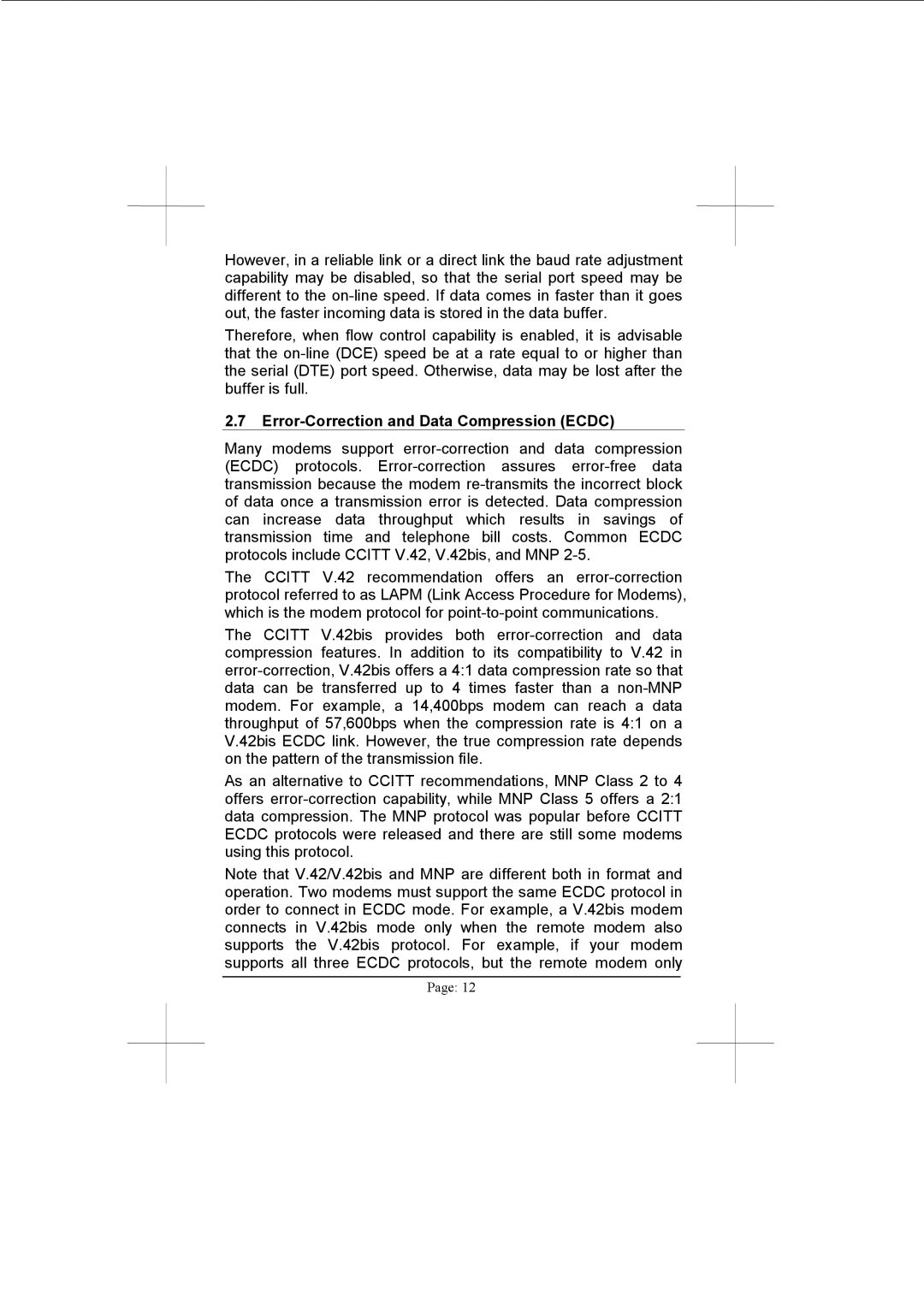However, in a reliable link or a direct link the baud rate adjustment capability may be disabled, so that the serial port speed may be different to the on-line speed. If data comes in faster than it goes out, the faster incoming data is stored in the data buffer.
Therefore, when flow control capability is enabled, it is advisable that the on-line (DCE) speed be at a rate equal to or higher than the serial (DTE) port speed. Otherwise, data may be lost after the buffer is full.
2.7Error-Correction and Data Compression (ECDC)
Many modems support error-correction and data compression (ECDC) protocols. Error-correction assures error-free data transmission because the modem re-transmits the incorrect block of data once a transmission error is detected. Data compression can increase data throughput which results in savings of transmission time and telephone bill costs. Common ECDC protocols include CCITT V.42, V.42bis, and MNP 2-5.
The CCITT V.42 recommendation offers an error-correction protocol referred to as LAPM (Link Access Procedure for Modems), which is the modem protocol for point-to-point communications.
The CCITT V.42bis provides both error-correction and data compression features. In addition to its compatibility to V.42 in error-correction, V.42bis offers a 4:1 data compression rate so that data can be transferred up to 4 times faster than a non-MNP modem. For example, a 14,400bps modem can reach a data throughput of 57,600bps when the compression rate is 4:1 on a V.42bis ECDC link. However, the true compression rate depends on the pattern of the transmission file.
As an alternative to CCITT recommendations, MNP Class 2 to 4 offers error-correction capability, while MNP Class 5 offers a 2:1 data compression. The MNP protocol was popular before CCITT ECDC protocols were released and there are still some modems using this protocol.
Note that V.42/V.42bis and MNP are different both in format and operation. Two modems must support the same ECDC protocol in order to connect in ECDC mode. For example, a V.42bis modem connects in V.42bis mode only when the remote modem also supports the V.42bis protocol. For example, if your modem supports all three ECDC protocols, but the remote modem only
Page: 12

